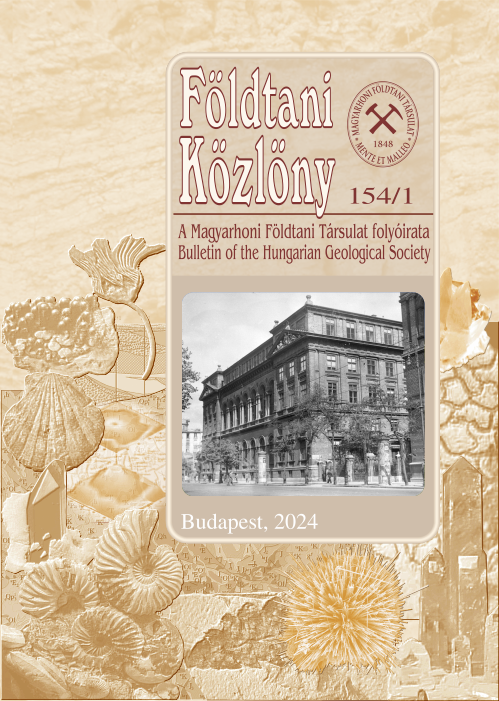Mineralogy of the Lower Toarcian black shale section from the Réka Valley (Óbánya Siltstone Formation, Mecsek Mountains, Hungary): implications for palaeoclimate
Abstract
In this paper, the results of a high-resolution mineralogical study of the Lower Toarcian black shale section (Óbánya
Siltstone Formation, Réka Valley, Mecsek Mountains) are presented. The samples collected from the black shale section
and from its underlying beds are predominantly composed of calcite, quartz, kaolinite, illite±muscovite and amorphous
substance. Additionally, pyrite, illite/smectite mixed-layer minerals, chlorite, rare plagioclase and K-feldspar are also
present. Moreover, there are some secondary minerals such as goethite and gypsum, reflecting outcrop weathering. The
samples of the black shale section have significantly higher kaolinite content relative to the underlying beds, indicating a
palaeoenvironmental change during the Early Toarcian oceanic anoxic event. The clay mineral assemblages are
composed mainly of kaolinite (45–80%) and illite±muscovite (15–55%); random I/S mixed-layers occur in small
quantities, sometimes with traces of chlorite. The clay mineral suites of the Réka Valley section reflect the original
composition derived from the provenance area and, therefore, may be used for palaeoenvironmental reconstruction of the
source area. In the clay fraction of the samples, the dominance of kaolinite (kaolinite/illite>1) indicates a high water-rock
ratio in the source area along with a humid-subtropical to tropical climate; this may represent a period of climatically
driven, more intense chemical weathering of the source terrains. In the black shale section, levels with high values (i.e.
more than 2) of the kaolinite/illite ratio suggest time intervals with an extreme continental weathering rate related to the
oceanic anoxic event











